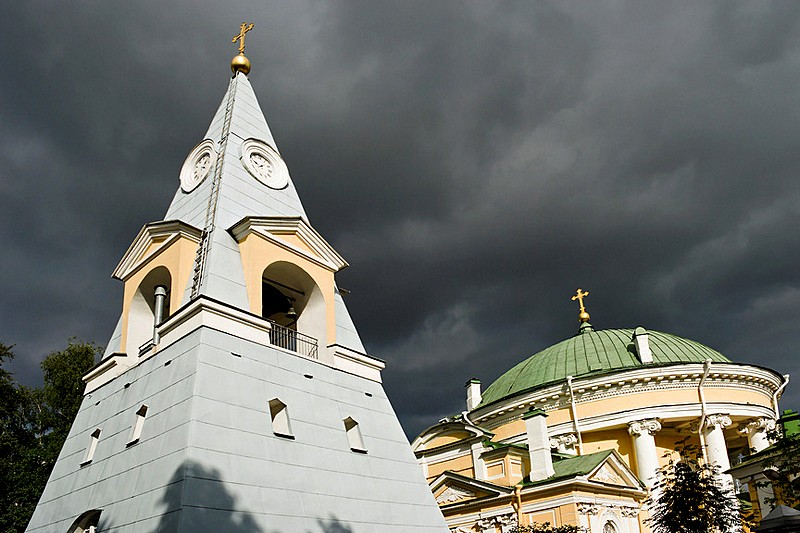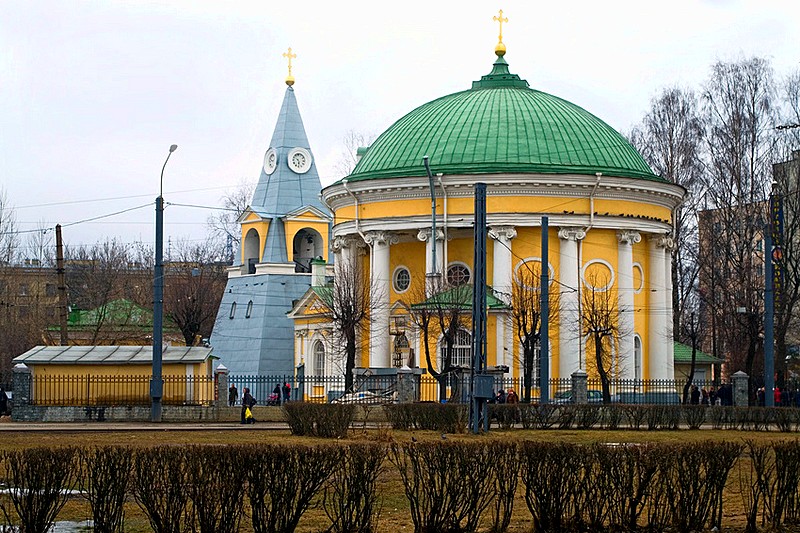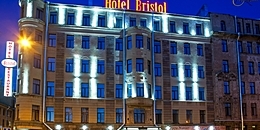Church of the Blessed Trinity
This extraordinary little 18th century church in the south of the city is popularly known as 'Kulich i Paskha' - "Easter cake and pudding" - a reference to its unique form, which comprises a squat neoclassical rotunda, similar to a traditional Easter cake, and a pyramid-shaped belltower, like 'kulich', a cheesecake pudding also served at Easter.
The church was originally part of the estates of Prince Alexander Vyazemsky, Procurator-General and the first director of the nearby Imperial Porcelain Factory. The palace and park that he built on the banks of the Neva became a popular destination for the court of Catherine the Great, and the Empress herself gave Vyazemskiy 200,000 rubles to develop his estates. He spent the money on the Church of the Blessed Trinity, employing Nikolai Lvov as architect. Lvov, known as "the Russian Leonardo" for his wide-ranging talents, which included painting, poetry, translation, engineering and invention, had returned from studying in Rome with a desire to combine the shape of the Pyramid of Cestius with a rotunda in the style of the Temple of Vesta.
The result was the Church of the Blessed Trinity, built between 1785 and 1787. In fact, both forms have their antecedents in traditional Russian church architecture, with rotunda mimicking a medieval cupola, and the pyramid belltower closely resembling a traditional tent-roof. Their juxtaposition side by side at ground level, however, is entirely original.
The church's rich interiors were also Lvov's work, and include the painting of the cupola in deep blue, with gilt stars. Although the area around it has morphed in over two centuries from aristocratic estate to urban industry, the church has survived remarkably unscathed by history, and was only closed for eight years - 1938 to 1946 - in the Soviet period. As Lvov's blueprints had survived, it was easy to restore the church to its original glory. The Church of the Blessed Trinity also gained a number of celebrated icons from other, less fortunate churches. Thanks to its longevity and charming design, the church remains one of the most popular in St. Petersburg with locals.
Address: 235, Prospekt Obukhovsky Oborony
Metro station: Lomonosovskaya
From the metro: Head left out of the station and towards the river along Pereulok Matyushenko, past the Imperial Porcelain Factory. Turn right along the embankment and continue walking about 500m. (15 minutes)
Opening hours: Daily from 7am to 8pm.
If you decide to take a trip to the Imperial Porcelain Factory, then this charming little church, one of the most unusual in Russia, is well worth a detour while you are in the neighborhood. Filled with icons and colorful decoration, the church holds daily services, and has a large and faithful congregation.






